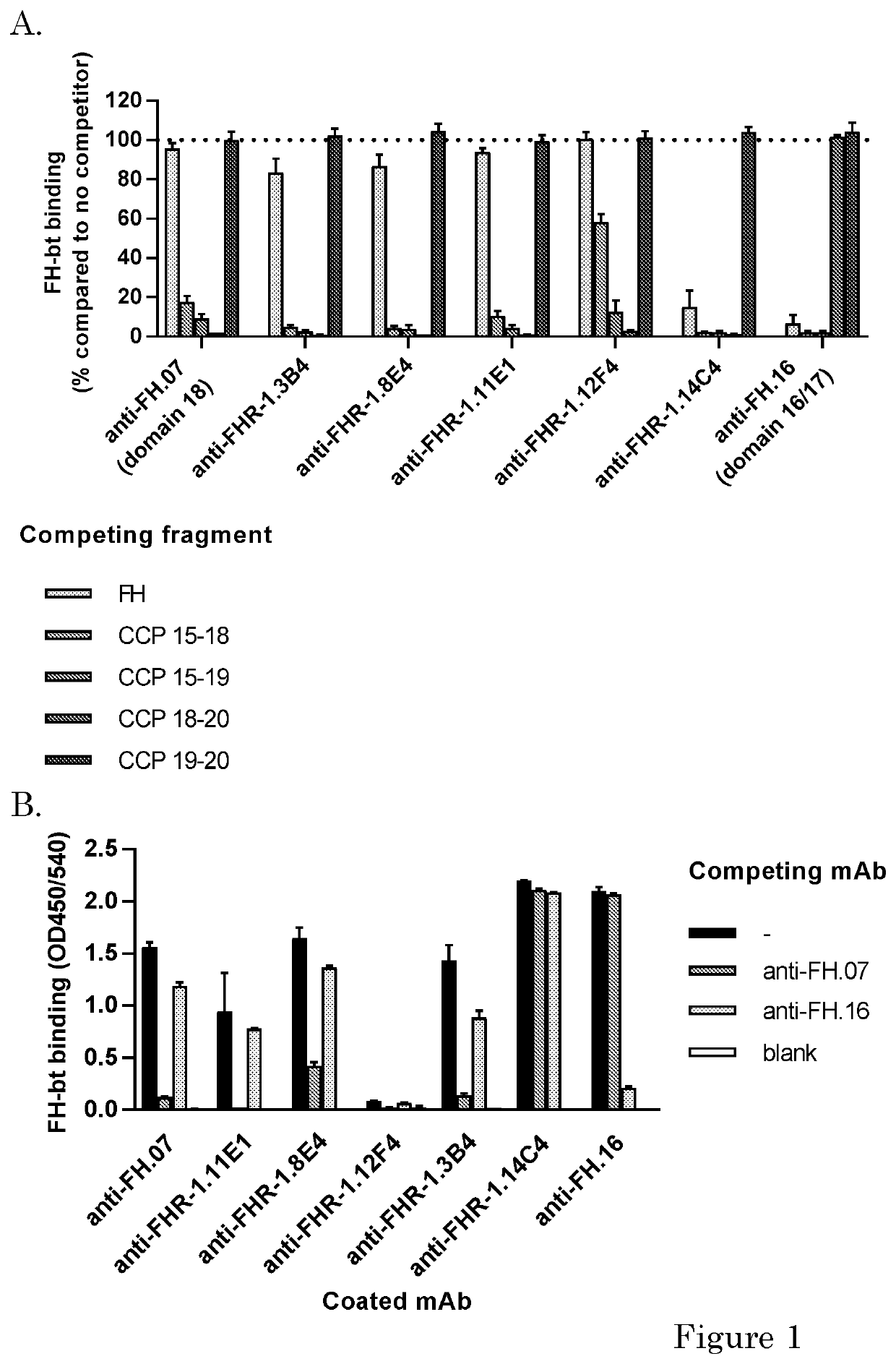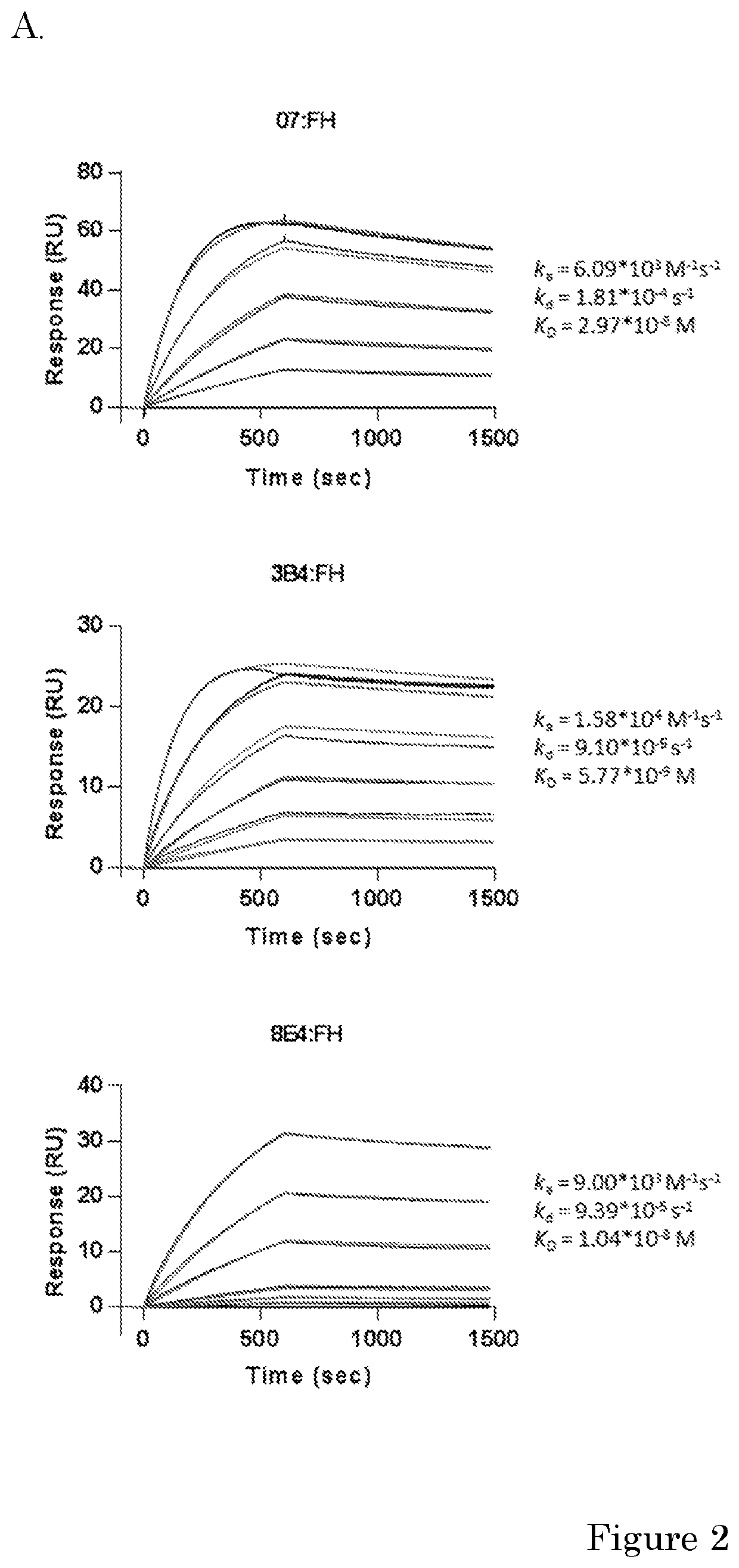Factor H potentiating antibodies and uses thereof
a technology of factor h and antibodies, which is applied in the direction of extracellular fluid disorder, drug compositions, peptides, etc., can solve the problems of plasma exchange, ahus clinical picture may worsen, and the appearance of self-protection is not sufficient,
- Summary
- Abstract
- Description
- Claims
- Application Information
AI Technical Summary
Benefits of technology
Problems solved by technology
Method used
Image
Examples
examples
Materials and Methods
Reagents
[0173]Human purified factor H was obtained from CompTech. (Tyler, Tex. USA). Rat anti-mouse kappa (RM19) was obtained from Sanquin (Business Unit reagents, Sanquin, Amsterdam, the Netherlands). High Performance ELISA buffer (HPE) was obtained from Sanquin. Recombinant FH CCPs (CCP 15-18, CCP 15-19, CCP 18-20 or CCP 19-10) were a kind gift of dr. Christoph Schmidt and were produced as described before (Schmidt et al. 2008). Mouse monoclonal antibodies (mAbs) against human FH were made previously. Anti-FH.07 (murine IgG1) is directed against CCP 18, anti-FH.09 (murine IgG1) is directed against CCP 6 and anti-FH.16 (murine IgG1) is directed against CCP 16 / 17. Anti-IL-6.8 was use as irrelevant isotype control and was obtained from Sanquin. Anti-C3.19 reacts with an epitope on the C3d fragment of the molecule and has been described before (Wolbink et al. 1993).
Expression of rhFHR Proteins
[0174]Recombinant human factor H-related (rhFHR) proteins, containing a ...
PUM
 Login to View More
Login to View More Abstract
Description
Claims
Application Information
 Login to View More
Login to View More - R&D
- Intellectual Property
- Life Sciences
- Materials
- Tech Scout
- Unparalleled Data Quality
- Higher Quality Content
- 60% Fewer Hallucinations
Browse by: Latest US Patents, China's latest patents, Technical Efficacy Thesaurus, Application Domain, Technology Topic, Popular Technical Reports.
© 2025 PatSnap. All rights reserved.Legal|Privacy policy|Modern Slavery Act Transparency Statement|Sitemap|About US| Contact US: help@patsnap.com



